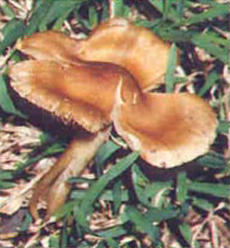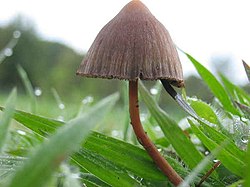This article's factual accuracy is disputed .(September 2011) |
| Part of a series on |
| Psychedelia |
|---|
 |
Psilocybin mushrooms are mushrooms which contain the hallucinogenic substances psilocybin, psilocin, baeocystin and norbaeocystin. The mushrooms are collected and grown as an entheogen and recreational drug, despite being illegal in many countries. Many psilocybin mushrooms are in the genus Psilocybe , but species across several other genera contain the drugs.












